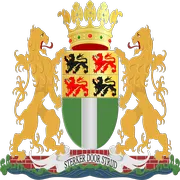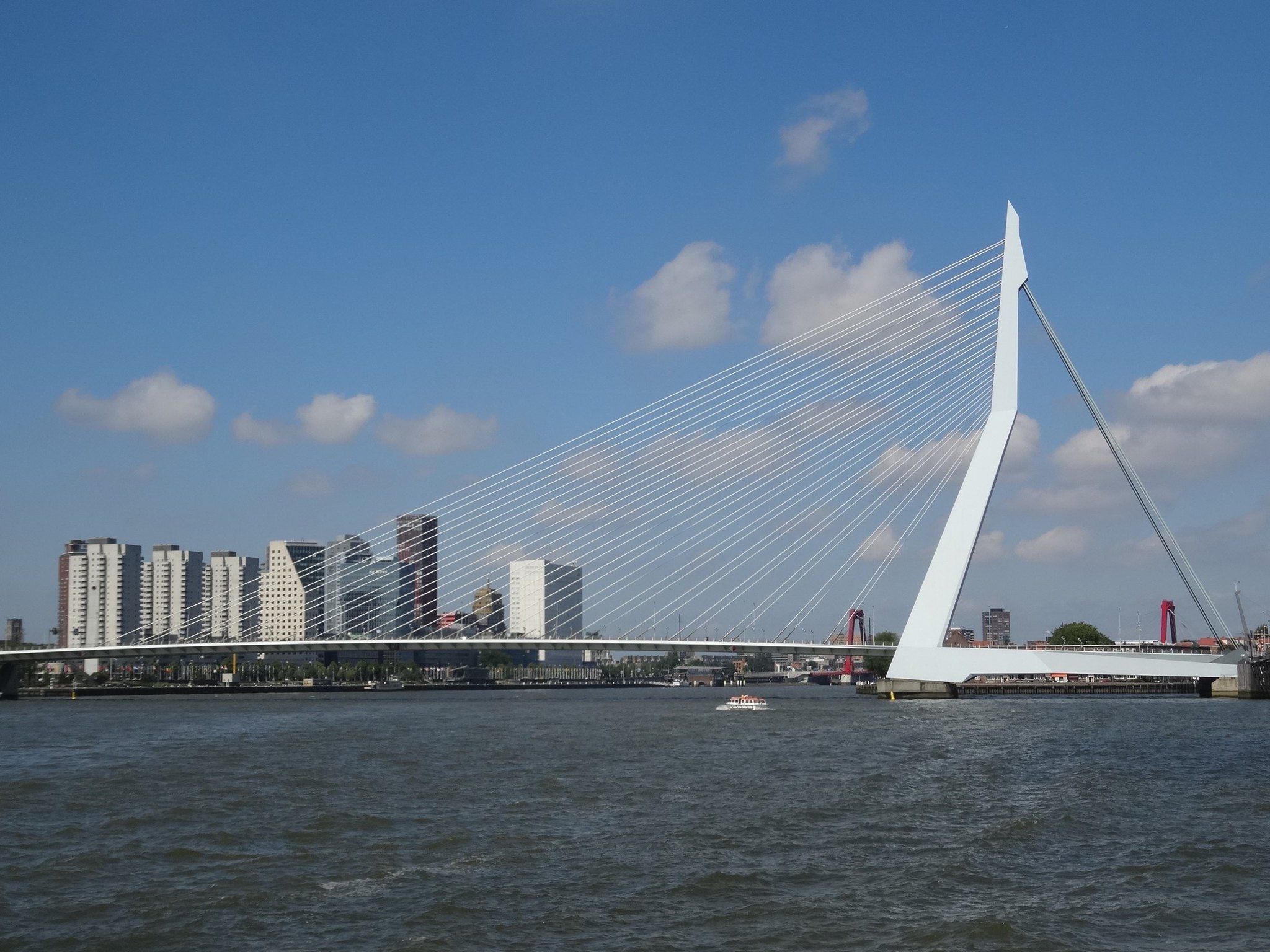Spanning the Nieuwe Maas river in the heart of Rotterdam, the Erasmus Bridge stands as a testament to modern engineering and architectural brilliance. This iconic structure, affectionately nicknamed “The Swan” by locals, has become the defining symbol of Rotterdam’s skyline and a must-visit destination for tourists from around the world.
Completed in 1996, the Erasmus Bridge was designed by renowned Dutch architect Ben van Berkel. Named after the famous Dutch Renaissance humanist Desiderius Erasmus, who was born in Rotterdam, the bridge seamlessly blends form and function. Its striking asymmetrical design features a 139-meter-high steel pylon angled at 45 degrees, supporting 40 cables that give the bridge its distinctive swan-like appearance.
The bridge spans 802 meters in total, making it the second-longest bridge in the Netherlands. It serves as a vital connection between the northern and southern parts of Rotterdam, accommodating pedestrians, cyclists, cars, and even a tram line.
Since its inauguration, the Erasmus Bridge has become much more than just a means of crossing the river. It has transformed into a cultural icon and a source of pride for Rotterdam’s citizens. The bridge’s elegant silhouette graces countless postcards, photographs, and artworks, cementing its status as one of the most recognizable structures in the Netherlands.
Events and Culture
The Erasmus Bridge plays a central role in many of Rotterdam’s cultural events and celebrations:
- National Fireworks Display: Every New Year’s Eve, the bridge serves as the backdrop for a spectacular fireworks show, attracting thousands of spectators.
- Rotterdam Marathon: The bridge forms a crucial part of the route for this annual event, challenging runners with its incline.
- World Port Days: This maritime festival showcases Rotterdam’s port history, with the Erasmus Bridge serving as a focal point for various activities and demonstrations.
Engineering Marvel
Beyond its aesthetic appeal, the Erasmus Bridge is a triumph of modern engineering. Its cable-stayed design allows for a relatively thin deck, creating a sense of lightness despite its massive scale. The bridge’s sophisticated counterweight system and advanced shock absorbers ensure stability in various weather conditions, including strong winds that are common in the area.
The bridge’s bascule section, which can be raised to allow tall ships to pass, is another engineering feat. This 89-meter-long section weighs a staggering 3,900 tons and can be lifted to a 90-degree angle in less than two minutes.
In recent years, efforts have been made to enhance the bridge’s sustainability. LED lighting has been installed to reduce energy consumption while maintaining the bridge’s stunning nighttime illumination. Additionally, the bridge’s design inherently promotes sustainable transportation by accommodating public transit and encouraging cycling and walking.
The Erasmus Bridge is more than just a river crossing; it’s a symbol of Rotterdam’s innovative spirit, resilience, and forward-thinking approach to urban design. Whether you’re an architecture enthusiast, a photography buff, or simply a curious traveler, a visit to this remarkable structure promises to be a highlight of any trip to Rotterdam. As you stand in its presence, you’ll understand why the Erasmus Bridge has captured the hearts of locals and visitors alike, becoming an enduring icon of the Netherlands’ second-largest city.

